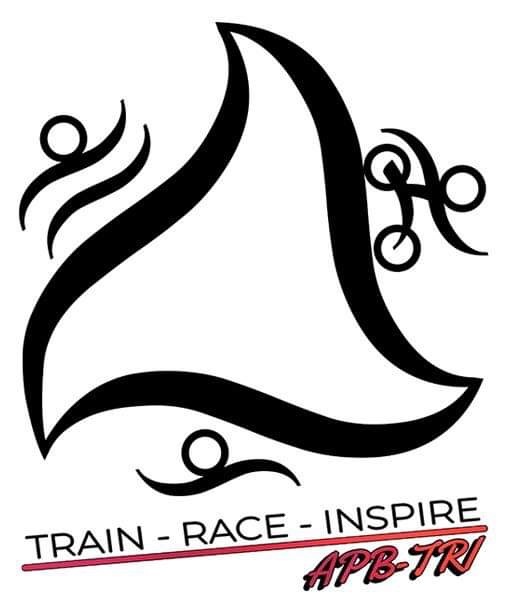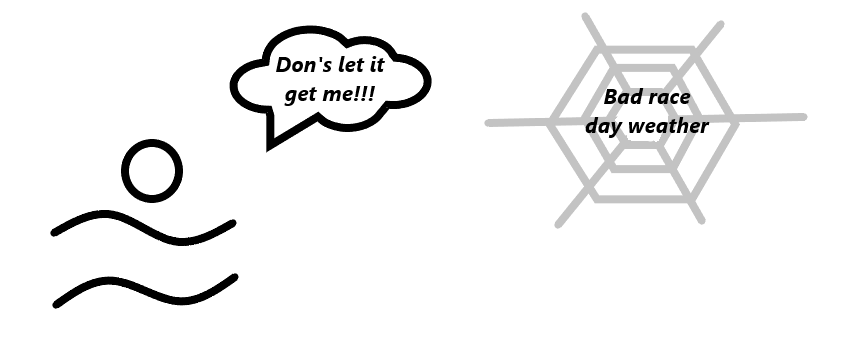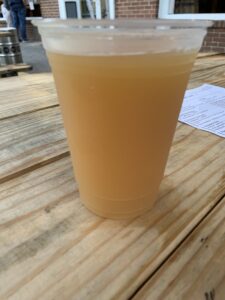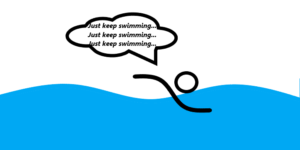Most cyclists feel a need for indoor bike trainers every now and then. Sometimes, it’s because weather outside sucks so badly that going outside is not really an option. For some, it’s a matter of logistics – can I put dinner in the oven and get my workout done? Maybe squeeze a ride in while kids are napping? It may not be a perfect replacement for a real ride, but it’s something and will need to do in a pinch. So this week, we’ll talk about your options.
Stationary bike

The first option you have is a stationary bike. We’ve all seen them at the gym before. They are common place and are definitely a way to go.
Pros
Indoor bike can accommodate various family members with simple adjustments of the saddle or handlebars. Depending on the type you go with, you may have programs you can set up or can at least change resistance without getting off the bike.
Another pro that’s hard to deny: you don’t need to use your regular bike. Ok, so this may be a double-edged sword. On one hand, it’s nice that you don’t risk scratching up your ride and don’t have to go through the process of setting it up every time you want to hit the road and then be back indoors. On the other hand, if you want to get comfortable on the real thing in advance of a long race, this may be more of a con.
Cons
An indoor bike costs more than just a stand where you put your bike. It also can’t be moved as easily – these things are heavy! However, if you have plenty of room and you can set it up in your home gym, then it’s not a problem.
Stationary bike trainers
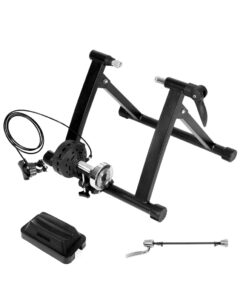
This is the way I went and it’s probably the cheapest way to go. This category is so broad that there are two subsets: ones that are compatible with Zwift and ones that are not.
Pros
They are definitely on the cheap side. Or at least you can find cheap options. You get to use your own bike, so that’s great if you want to make sure your form is correct. I also appreciate that if need be, I can easily fold it up and put away in my closet.
Cons
Some are loud… Yeah, they can drown out other sounds. Although probably not loud enough to wake a sleeping kid. They can also be a pain to set up, which if done regularly, can be a total turnoff.
Pro/ Con
As I mentioned earlier, there are different levels of sophistication for these trainers and it can make a huge difference. Some are compatible with Zwift and such and some are not. If you have Zwift, then you can join rides with other people, have varying courses and be engaged. If not – your only way to change resistance mid-ride is through switching gears. It’s also easy to forget that you’re supposed to keep going, as it gets monotonous.
Roller bike trainers

I have mixed feelings on this…
Pros
Rollers are relatively cheap and easy to pack, so they definitely have this going for them. You get to use your own bike, too! They also force you to focus on what you’re doing – you are on a regular bike, so you have to make sure you’re staying up and in your area. This kind of a ride is great for your core!
Cons
So you have to work on your balance… There is a flip side: potential for a crash. If you’re trying to squeeze in a workout while kids are asleep, this is definitely a problem. I am also not sure how long one can last on one of these.
Peloton (and similar)
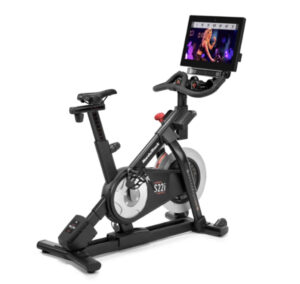
By all accounts, an expensive options, whether you go with Peloton itself or one of their direct competitors.
Pros
It’s a whole workout system and a lifestyle! You can go for a regular ride or choose a course. As with regular indoor bike, you can easily adjust for different family members.
Cons
Have I mentioned it’s expensive? And it’s not just the initial purchase (which is bad enough): if you want it to have all the fancy functions, you have to pay a monthly subscription!
Other cons of Peloton-like bikes are the same as those of a stationary bike: you need a place to put them. They are heavy. And they don’t really feel like the real deal.
So which type is best?
As with many other things, both in training and in life: it depends on your personal circumstances. How price sensitive are you? How much room do you have for it? Do you have a real bike you want to use? I hope this helped some with the decision making process.
And as always: see you on the roads!
